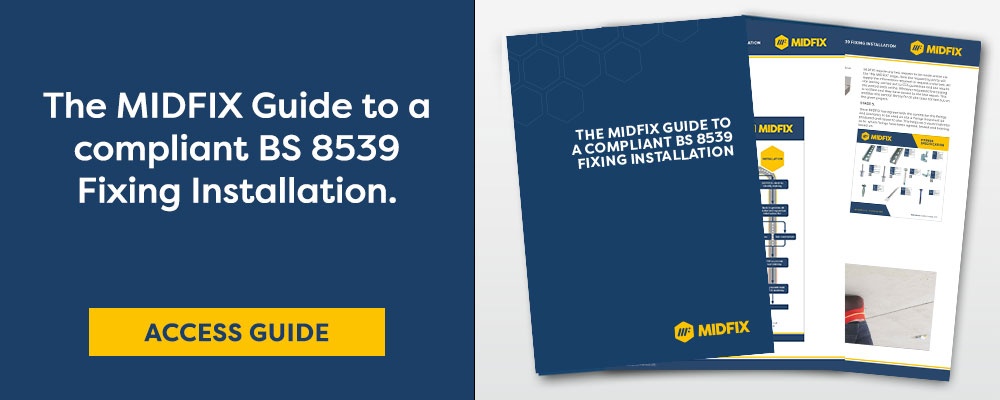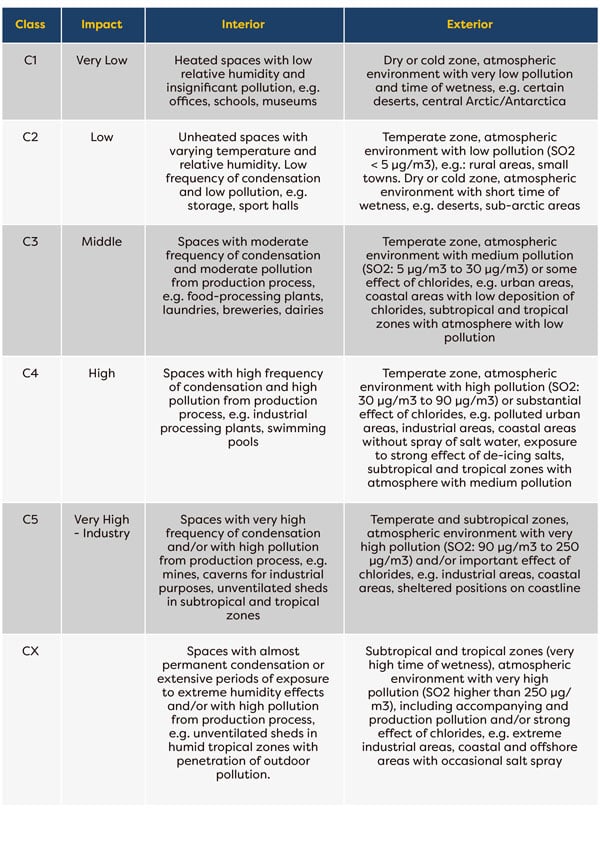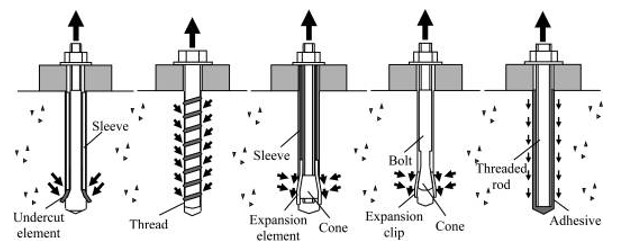Can Anchors fail?
In our latest sound-out episode Stevan provides examples of past anchor failures and outlines the importance of prioritising anchors.
There have been many examples of bracketry failure on-site, thankfully, not many anchor failures have led to the loss of life. However, when the correct anchor is not specified, and the installer is not competent anchor installation failure can occur.
Boston big dig
Sadly, for the famous big dig (Boston, Central Artery/Tunnel Project (CA/T) a falling concrete slab led to the death of a motorist, this has been said to be down to an anchor installation failure.
In the UK, the CFA (Construction Fixings Association) have written a few case studies highlighting past anchor failures.
CFA Case Study 1
CFA Case Study 2
After a fatality in Ireland, the Irish health and safety association introduced a ‘code of practice for the design and installation of anchor’ this was later developed by the CFA into the BS 8539:2012 code of practice.
BS 8539 Code of Practice for the selection and installation of anchors in concrete and masonry
What is BS 8539:2012?
BS 8539 is a British standard code of practice for the selection, supply, installation and testing of anchors in concrete and masonry. It is restricted to the use of anchors inserted into concrete and masonry drilled holes and it outlines the responsibility of all stakeholders involved in the supply chain of anchors.
BS 8539 offers guidance to designers, manufacturers, specifiers, contractors, installers and site testers.
| Role | What BS 8539 states |
|---|---|
| Designers
Design the complete building which means they have access to all of the information incl. load rating and the substrate. In the M&E industry it is very rare that the designer is the specifier. |
The designer should outline the anchor/fixing, drawing on the manufacturer’s description and part code so that the supplier can select the correct anchor. When selecting an anchor, the following should be considered (which we will go into in more detail later): · The substrate that the anchor is being fixed into; cracked/uncracked concrete, block, brick, timber etc. (Clause 5) · Can the anchor sustain the load bearing of the application? · Environment of the anchor. Will it be outside, inside, humid or not and what finish is suitable? From carbon steel to zinc-plated to stainless steel, to high corrosion resistant materials. · Type of installation – flush-fixed or through fixing. · Type of anchor - torque-controlled, deformation-controlled, undercut or resin. · Approvals - does the anchor meet the ETA approval? |
| Specifiers
According to BS 8539, any individual within the supply chain of an anchor can be referred to as a ‘specifier’. They select the anchor/fixing. |
· The make, type, ETA number, size and manufacturer reference/order number · Instructions for installation · Guidance for the installer on what to do if reinforcement is hit when drilling |
| Contractor
Employs the installers onsite. It is their responsibility to ensure installers are trained. |
The contractor should provide the correct anchor as specified. If changing this specification, they should carry out the due diligence to ensure that clause 10 of the change of management procedure is followed. If the contractor has seen that the anchor specified is not the correct one, they should inform the original specifier. The contractor should install the anchor to the manufacturer’s specifications (or training). |
| Manufacturer
Those that manufacture the anchor/fixing. |
The manufacturer should provide: · All information for the specifier to select the correct anchor; · Technical catalogues and software; · Installation instructions for the installer; · Recommended resistance (or appropriate safety factor to allow calculation); · Setting details including min. thickness of base material, edge and spacing criteria; · Installation instructions and equipment needed. |
| Supplier
Those that supply the anchor on site |
The supplier should provide: · Provide the anchor as specified, unless a specific change management procedure has · Take the opportunity to ensure all associated setting equipment is offered to the contractor such as drill bits, hole cleaning equipment, setting tools, torque wrench etc., so that the installer can install anchors correctly; · Provide installation training or facilitate this being provided by the manufacturer; · Provide guidance in anchor selection; · Ensure the change management procedure is adhered to if asked for alternatives |
| Installers Individuals that install a fixing/anchor into a substrate onsite |
BS 8539:2012 states that anchors should be installed and supervised by competent individuals. BS 8539 defines competent as: “Suitably trained and qualified by knowledge and practical experience, and provided with the necessary instructions, to enable the required task(s) to be carried out correctly”. When the anchor is originally supplied to site, the installer should look at the setting tools (e.g. torque wrench, torque specification and set the torque up correctly). The drill diameter, drill depth, recommended torque value and load bearing should also be taken into consideration. |
| Site testers Usually, a manufacturer or distributor that tests the anchor after installation, as requested by the contractor. |
BS 8539:2012 states that testing is not required if an ETA anchor has been used, installed and supervised by competent individuals. This means: · Anybody carrying out a site test should be qualified by the CFA. · Proof testing or allowable load testing CFA guidelines should be followed. · Correct reporting procedures as per CFA guidelines should be followed. |
Why are there anchor failures?
It is in fact very rare for an anchor to fail on its own, if it does it is usually down to two reasons:
- The incorrect anchor has been specified (the correct selection criteria has not been followed)
- The anchor has been installed incorrectly.
Let’s explore a few of these reasons why anchor failure occurs.
Anchor selection and BS 8539
Under BS 8539 there are a few factors that need to be understood in order to select the right anchor.
- Understand the type of substrate the anchor will be fixed into (standard, lightweight, cracked, uncracked concrete)
- Understanding the load placed upon an anchor during its working life.
- The environment surrounding an anchor – will it be installed internally, externally, in humid or special conditions and how corrosion plays a part.
- Type of install – pre-installed fixings (flush) or through-fixings
- Type of anchor – friction, interlock or bonding - all types work differently
- Approvals – is the anchor ETA-approved?
Understanding the type of substrate
Anchors qualified for use in cracked concrete are expected to function reliably in the expected widths of cracks developed because of tensile stresses in concrete structures designed in accordance with BS EN 1992. In the region of an anchor, the concrete might be cracked or non-cracked.
BS 8539:2012 states – concrete is likely to be cracked from a variety of causes including stress conditions inherent in the structure, those induced by characteristic permanent actions and characteristic variable actions, thermal movements, shrinkage and the restraint of deformation.
What is cracked concrete?
Any concrete in tension, such as the underside of ceilings and tension areas within walls, will have numerous, mostly invisible, small cracks and is called ‘cracked concrete’ – this is the nature of concrete.
According to BS 8539:2012 – anchors used for suspending services from concrete ceilings need to have an ETA that covers cracked concrete.
The bottom line is that anchors should be chosen that are suitable for use in cracked or non-cracked concrete, as appropriate. The specifier should assume the concrete to be cracked unless an exercise has been carried out to determine whether it is cracked or non-cracked.
Understanding how the load affects an anchor.
Unless an anchor has been ETA-approved it is unknown how the anchor will perform under a given load. We need to consider all the different types of load when selecting an anchor.
- Static / dynamic
- Magnitude – applied load
- Direction – Tension / shear / combined
- Duration – short term / long term
Do we know the applied load?
The actual load intended, by the designer, to be applied to the fixing (can be referred to as unfactored load).
Do we know the static/dynamic load?
A dynamic load is a load that has changed in either size, position or direction. A static load is the weight of an unmoveable object on a surface.
Do we know the direction of the load?
Is the load on the anchor deriving from tension, shear or both.
How long will the anchor undergo a certain load?
For example, will an anchor be under a certain load for the short term or long term?
How does the environment surrounding an anchor affect selection?
There are several factors that affect the selection of an anchor in relation to its’ environment. We need to know whether the anchor will be installed internally, externally (near the coast), in humid conditions or special conditions. The corrosiveness of an environment can impact the working life of an anchor/fixing.
The table above illustrates the different corrosion categories and their impact on different environments as outlined in the ISO 9223 classifications.
What if I am installing an anchor in a swimming pool?
There are certain environments we must be very careful about when selecting anchors such as swimming pools because of the chlorinated environment. This environment can induce stress corrosion cracking in some grades of stainless steel. Once you understand the environment and its impact on an anchor, you can then decide on the suitable finish.
How can the type of install affect anchor selection?
There are two main types of anchor installation. Pre-installed fixing (flush) and through-fixing.
With a flush fix the anchor needs to be pre-installed into the substrate before the fixture can be applied. This usually means marking out accurately (sleeve, wedge (drop-in) and wall plug anchors)
As the name suggests the through fix can be fixed through the fixture usually making for a quicker install. Common too (concrete rod hangers, concrete screws and throughbolts).
Anchor selection and anchor type
There are three types of anchors:
1.) Friction - These include anchors such as throughbolts and drop-ins
2.) Interlock – These include concrete screws
3.) Bonding – These include resin anchors
anchor working principles
Anchor selection and ETA-approvals
It is important for the specifier to understand whether an anchor has been ETA-assessed. The ETA defines the anchor, the intended use of the anchor, the materials it can be used in, and how it is to be installed. ETA approved products carry ETA/CE mark, the ETA assessment number and the installation instructions on the product label or product information sheet.
How can I make sure anchor installations are compliant with BS 8539?
BS 8539:2012 states that anchors should be installed and supervised by competent individuals.
BS 8539 defines competent as: “suitably trained and qualified by knowledge and practical experience, and provided with the necessary instructions, to enable the required task(s) to be carried out correctly”.
Each manufacturer is unique, therefore it is important to always check the manufacturer’s guidelines/instructions before installation. One common error within anchor installation, is the lack of knowledge or understanding around setting an anchor.
For example, to install throughbolts correctly, a torque wrench must be used, it is also important to note that you shouldn’t over-toque an anchor either as this can put undue stress onto the anchor.
Anchors should not be left to the last minute.
Anchors are a small component to which little consideration is frequently given but are vital to preventing the collapse of the structure or installation that depends on them. Overall anchors should not be a last-minute decision. If little concern is given to the selection and installation of an anchor, then anchor installation failure can occur.
If anchors are specified during the design phase of a project, then this will ensure enough time for the correct due diligence to be carried out, minimising the risk of encountering any anchor/fixing issues.
How can MIDFIX help?
Start the conversation around anchor/fixing compliance
0115 922 1585
sales@midfix.co.uk
Ask our expert technical team a question online.
Further reading:
If you want to read deeper into the subject of BS 8539:2012 and how it affects anchor/fixing compliance take a look at our guide.




